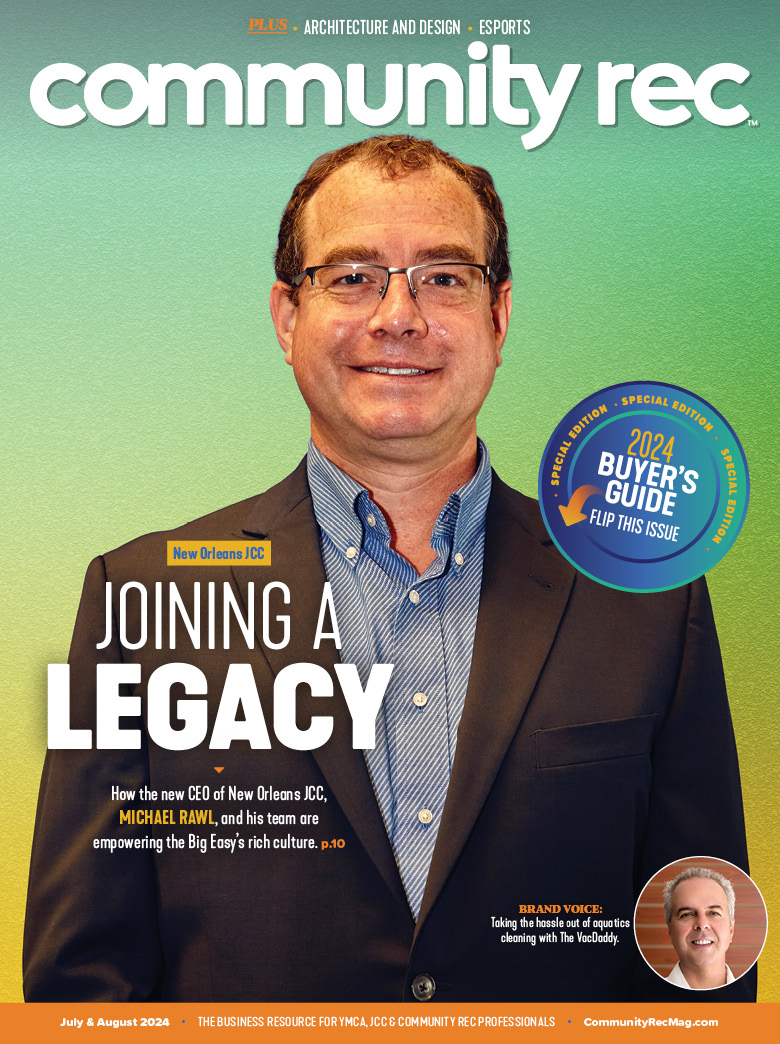If you’re looking for a way to take your offerings to new heights, an indoor rock climbing wall is a valuable amenity. Rock climbing is a great way to engage members who show more “thrill seeking” tendencies, as well as provide the opportunity for those less familiar with the rock wall to learn a new activity.
“Rock climbing benefits our members by providing a continually challenging activity, as well as an outlet from standard sports,” said Cory Greenway, the program director of Worthington Area YMCA. “Rock climbing has also provided a great opportunity for families to bond.”
In fact, the Worthington Y has found rock climbing to be very effective in drawing participation from families in the area, especially since it has the only indoor rock climbing wall in the community.
“We have had good success with incorporating family climbing times, which is great for us, as a YMCA — we want to encourage family participation and growth together,” shared Greenway. “We can provide our members access to an activity and education they could not receive without a three-hour drive to a large metropolitan area.”
While rock climbing is very popular at the Worthington Y now, getting the program off the ground was challenging at first.
“Our biggest hurdle initially was getting the word out and getting interested parties to utilize our rock wall,” said Greenway. “Lack of registrations and initial interest forced our programming back, and it took around six months before our programming was viable.”
In the early days of its existence, the program got a boost from the weather, and it’s been a mainstay ever since, according to Greenway. “With the onset of winter, our community was being pushed indoors, so we saw an initial spike in participation,” he said.
No matter the size of your community or proximity to another facility’s indoor rock wall, a well-run rock climbing program can be a differentiator. According to Greenway, there are three keys to effectively offering rock climbing and capitalizing on this opportunity:
- Competent instruction from governing bodies or certification agencies.
- Safety plans, regular staff meetings and trainings to continually practice the skills required to safely and effectively manage a rock wall.
- Regular re-setting of the routes — this allows us to continually challenge our membership and keep it fresh.
And a strong relationship with a certification agency, such as the American Mountain Guides Association (AMGA), goes a long way. “Enough cannot be said for the safety, training and wealth of knowledge certification agencies can provide, as well their insights in effective management of programming,” said Greenway.
Mastering the operational aspects of rock climbing isn’t enough, however. In order to keep up high participation, effective marketing inside and outside your facility is essential.
“We publish our program offerings, including rock climbing, in our quarterly brochure, and offer group rentals for birthday parties, corporate events, team building and youth groups,” explained Greenway. “Our most effective marketing has been through personal contact with local entities, providing resources and information on the services we can provide.”
Improving your daily operation of rock climbing activities and the wall itself, as well as your marketing strategies, will enhance your facility’s ability to engage a wide variety of members and families.
“In our area, rock climbing is a very unique opportunity, and very few community members have ever experienced climbing — on an indoor wall or outdoors,” said Greenway. “We have been able to maintain stable programming for youth and adults.











